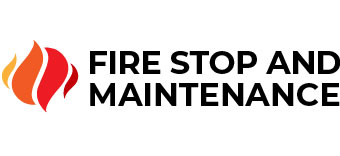Preventing or slowing the spread of fire
Cavity barriers and fire curtains are key components in Passive Fire Protection systems and are designed to prevent or slow the spread of fire, smoke, and heat in buildings. They work by compartmentalising fire, giving occupants time to evacuate and allowing firefighters to respond before the fire spreads uncontrollably.
Cavity Barriers
Cavity barriers are used for sealing cavities and voids in buildings in places like roofs, ceilings, walls and floors. They work because the materials used in cavity barriers to plug the gaps are sensitive to high temperatures and will expand when exposed to fire.
Compartmentalisation
Cavity barriers divide the concealed space into smaller, isolated sections, limiting the movement of flames and smoke. This stops the fire from using these spaces to travel from one part of a building to another.
Fire Resistance
These barriers are made from materials that can withstand high temperatures for a set period of time (typically 30, 60, or 120 minutes), which slows the progress of the fire long enough for firefighting teams to take action and occupants to escape.
Smoke Control
Cavity barriers also prevent the spread of hot smoke and gases, which can be just as dangerous as the fire itself. Containing smoke in certain areas helps maintain safer escape routes for occupants.
Fire Curtains
Fire curtains are flexible, heat-resistant barriers that can be used in a fire to seal off parts of a building. They are commonly used in open-plan designs, where traditional fire doors or walls might not be feasible.
Automatic Deployment
Fire curtains are typically stored in ceiling recesses and automatically drop down when a fire alarm is triggered. This creates a temporary fire-rated barrier to contain the fire in a specific area.
Fire Resistance
Like cavity barriers, fire curtains are made from materials designed to withstand high temperatures, often rated for 30 to 120 minutes of fire resistance. This helps prevent the fire from spreading to adjacent areas.
Smoke Control
Many fire curtains also have smoke seals to prevent toxic smoke from moving through the building, which can block escape routes and cause harm to occupants.
Space Flexibility
Fire curtains can be used to section off stairwells, corridors, and large open spaces in shopping malls, theatres, or warehouses. This gives protection without the need for permanent walls which would disrupt the layout of the building.
Using both systems
Cavity barriers prevent hidden fire spread, focusing on concealed spaces where fire could go undetected, whereas fire curtains contain fire in visible, open spaces, serving as a flexible option in areas where permanent partitions or walls aren’t practical.
Using both systems together means buildings are better protected from visible fire spread in open areas and hidden fire spread in concealed cavities. Our team is trained in using all leading manufacturers’ products, such as Rockwool ablative coated batt for fire curtains and barriers, and Firefly fire barriers.




